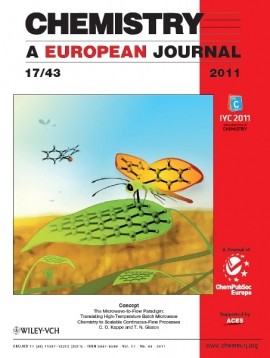Solvent-Catalyzed Ring-Chain-Ring Tautomerization in Axially Chiral Compounds
Abstract
The mechanism of ring–chain–ring tautomerization and the prominent effect of the solvent environment have been computationally investigated in an effort to explain the enantiomeric interconversion observed in 2-oxazolidinone derivatives, heterocyclic analogues of biphenyl atropisomers, which were isolated as single stable enantiomers and have the potential to be used as axially chiral catalysts. This study has shed light on the identity of the intermediate species involved in the ring–chain–ring tautomerization process as well as the catalytic effect of polar protic solvents. These mechanistic details will prove very useful in predicting and understanding ring–chain tautomeric equilibria in similar heterocyclic systems and will further enable experimentalists to devise appropriate experimental conditions in which axially chiral catalysts remain stable as single enantiomers.




 Open Access version available at
Open Access version available at 
